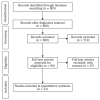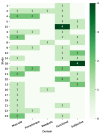Towards a Functional Performance Validation Standard for Industrial Low-Back Exoskeletons: State of the Art Review
- PMID: 33530377
- PMCID: PMC7865790
- DOI: 10.3390/s21030808
Towards a Functional Performance Validation Standard for Industrial Low-Back Exoskeletons: State of the Art Review
Abstract
While the research interest for exoskeletons has been rising in the last decades, missing standards for their rigorous evaluation are potentially limiting their adoption in the industrial field. In this context, exoskeletons for worker support have the aim to reduce the physical effort required by humans, with dramatic social and economic impact. Indeed, exoskeletons can reduce the occurrence and the entity of work-related musculoskeletal disorders that often cause absence from work, resulting in an eventual productivity loss. This very urgent and multifaceted issue is starting to be acknowledged by researchers. This article provides a systematic review of the state of the art for functional performance evaluation of low-back exoskeletons for industrial workers. We report the state-of-the-art evaluation criteria and metrics used for such a purpose, highlighting the lack of a standard for this practice. Very few studies carried out a rigorous evaluation of the assistance provided by the device. To address also this topic, the article ends with a proposed framework for the functional validation of low-back exoskeletons for the industry, with the aim to pave the way for the definition of rigorous industrial standards.
Keywords: assistive device; fatigue relief; industrial exoskeleton; low back; low-back pain; worker support.
Conflict of interest statement
M.G. and A.P. hold shares of AGADE S.r.l., a start-up company dealing with potential commercialization of exoskeletons for industrial applications. The other authors do not have anything to disclose.
Figures




References
-
- Mosher R.S. Handyman to hardiman. Sae Trans. 1968;76:588–597.
-
- Liepert J., Hamzei F., Weiller C. Lesion-induced and training-induced brain reorganization. Restor. Neurol. Neurosci. 2004;22:269–277. - PubMed
Publication types
MeSH terms
Grants and funding
LinkOut - more resources
Full Text Sources
Other Literature Sources

